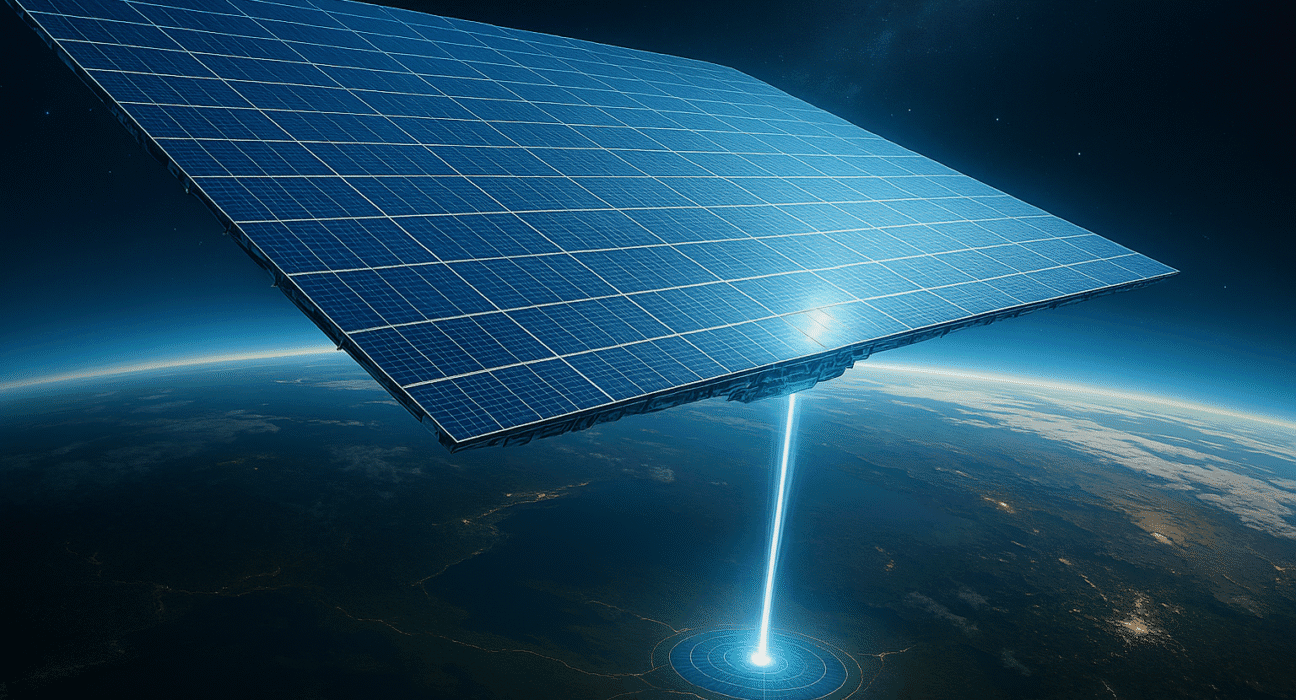China to Launch 1-Kilometer-Wide Solar Power Station into Space 36,000 km Above Earth

China is on the verge of sending an innovative 1-kilometer solar power station to space that will be in a geostationary orbit about 36 kilometers from the Earth. Completed initiative will allow gathering of solar energy in orbit and the wireless transmission of energy to the Earth via microwave beams.
The use of solar energy in orbit where there is constant sunlight not interrupted by Earth’s atmosphere, day-night restrictions, among other challenges is going to change the world, as proposed in this program.
Space-Based Solar Power: A Leap Beyond Ground Technology
The ground solar panels are prone to clouds, restricted sunshine but this space station will access unending solar radiation. When converted into Microwaves, the energy will be used to be wireless transfered to ground for electrical conversion.
According to Chinese researchers, the power station could replace global oil consumption quarterly with clean renewable energy.
According to a senior scientist at the China Academy of Space Technology, Li Ming, this space solar station could pump as much energy into orbit as the Three Gorges Dam.
Long-Term Vision: China’s Ambitious Energy Goals
This space solar power station’s launch is critical for China to make an impact on the global renewable energy space and reduce use of fossil fuel. It is essential in enabling China to achieve its goal for carbon neutralization by 2060. The growth in space-based infrastructure demonstrated the effort to move China toward clean energy technology at the cutting-edge development.
From the year 2019 studies started in a research center in Chongqing where scientists could test prototypes for solar power collection and wire-less power transfer. The CNSA is the central enabler of the project, which cools China’s ambitious attempts at becoming the global leader in space based technologies well by the mid-century.
Long March-9 Rocket to Play Key Role
China hopes to send parts of the solar power station into space using the still-developing Long March-9 rocket. This next generation launcher is an integral part of the solar power station mission because it has been designed to enable deep space exploration and large orbital installations.
The experts say that several launcher launches are needed to deliver the entire infrastructure so this mission would be among the most difficult ever ventured to Dagan.
If completed successfully, this project may become an important milestone towards the harnessing of space generated energy and a model for future international endeavour.
Microwave Energy Transmission: Safe and Efficient?
The main emphasis of the present project lies in its microwave transmissions system that is responsible for the transmission of solar energy collected in space to receiving stations on earth. Though not fully developed yet, it is anticipated that the technology will offer power at least 10 times better than [that] currently available with ground based solar techniques.
There have been in rotation doubts over the potential hazards of microwave transmission. In any case, it is worth noting that researchers guarantee that the beams will remain fully under control and harmless with the existing safe-guards to guarantee the aviation, satellites or humans will not be harmed.
Potential Impact on Global Energy and Climate
In case that China’s space solar power station operates according to the plan, it will be able to change the world’s energy industry. Nations no longer would fully rely on their own, daylight-limited sources of energy for energy consumption. This approach enables around the clock power generation from space with minimal effects on the environment.
Such technology might be used to deliver accessible electricity to communities anywhere in the world, especially in places distant from traditional electrical networks. Solar energy beamed in from space may be used to supply electricity to remote communities, hard hit areas and military bases where transmission is difficult.
If coal and oil electricity generation is substituted by space solar power, this technology would significantly reduce greenhouse gas emissions and help achieve the global objective of slowing climate change.
Geopolitical and Economic Implications
At the borderlands of science and sustainability, China’s project has a clear geopolitical import. It shows China’s strategic desire to lead the world in space with respect to frontier areas such as orbital markets, lunar researches and security space technology.
The successful launch of this gigantic energy facility in orbit may reinforce China’s soft power, and could make it into an important supplier of electricity from space. Though it appears that the United States, Japan, and European Union is also investing, currently it would seem that China is in the lead in comparable technologies.
Timeline and Next Steps
Although the infrastructure of the whole station may not start the testing on launch until the last decade of this one, China plans to launch its first experimental modules and equipment into orbit in 2028. The plan is that by 2035, China’s pilot system will be in place and made to support a small number of electrically powered ground stations. The full 1-km array should be installed soon, if early tests and international partnership pans work out.
While on the other hand, China is perfecting the systems for energy conversion, microwave safety, signal alignment operation, and orbit management – all with their respective special challenges.
Final Thoughts: A Giant Step Toward Renewable Energy Dominance
The ambition of China’s plan to deploy a solar power station 36,000km above earth goes well beyond academic fiction. The initiative marks an epoch-making era of clean energy as it allows generating solar power in orbit and delivering it to Earth instantly, day and night.
As the demand for energy grows and climate problems continue piling up, space-based solar power can change the game, and China is going to lead the way.









